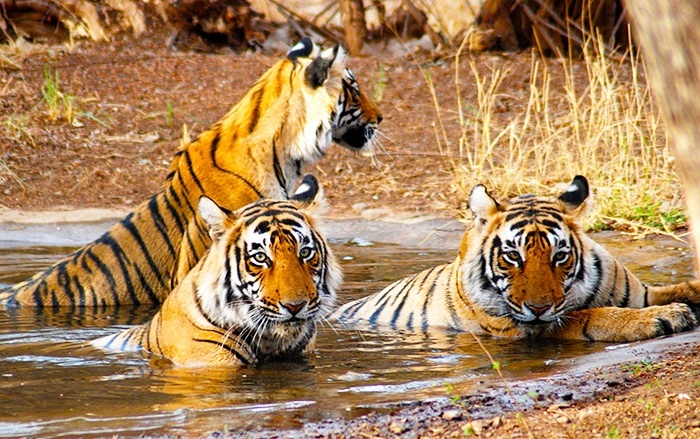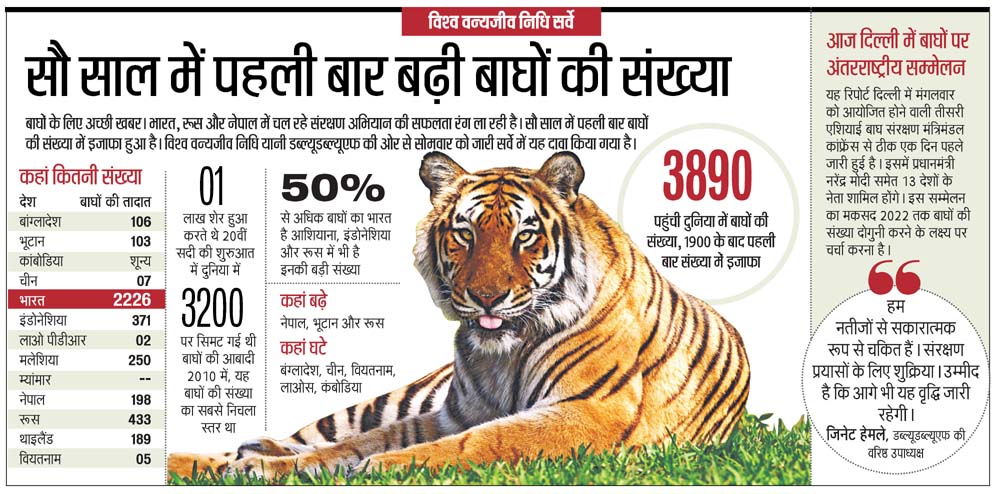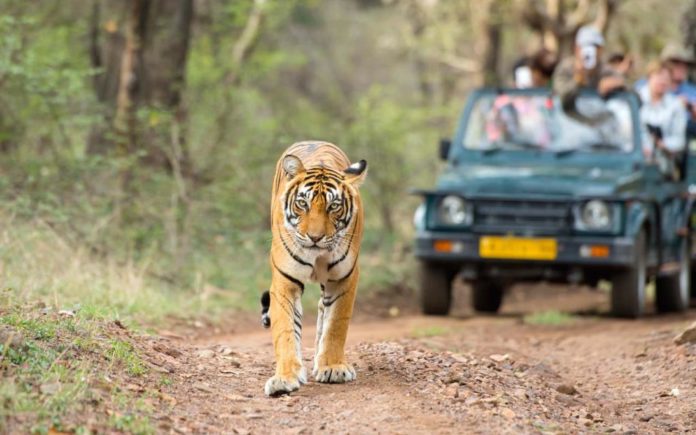In 2007, Rajasthan state broke into furor when the government suspended 8 forest officials that were allegedly involved with local poachers in smuggling tiger hide in Sariska National Park. Thereafter, the government got vigilant about tiger conservation and a series of policies and parks were announced in an effort to increase their number. A decade later, the efforts of Rajasthan government showed colors as Ranthambore Tiger Reserve registered the highest number of tigers in the history of Rajasthan. The world-acclaimed national park in Sawai Madhopur currently accommodates 62 tigers.

This information was made public by the leaders in response to a question raised in the state assembly just recently. If the park management is to be believed, the number of stripped cats is more than the reserve’s housing capacity. Therefore, the government is making provisions to migrate the weak, elderly and sick tigers to other favorable regions like Jhalana, Kumbalgarh and Mukundara Hills.

Based on the reports of local wildlife experts, 20% of the tigers occupying various Rajasthan reserves die due to territorial attacks, natural reasons and migrations. Some of them go into hiding whereas others are forcefully captured by the villagers. It’s evident from the fact that 3 male and 7 female tigers went untraceable in last five years.
Since then, the government has actively made arrangements for the safety and monitoring of tigers.

For those who don’t know, the Ranthambore reserve spans over an area of 932-square kilometers. To make it cozy and comfortable for the tigers, in last 3 years, the government has—
- Relocated villages like Bhid and Kathuli (comprising 139 and 151 families respectively) far-off from the forest area,
- Issued 40,000 LPG connections to villagers residing near the reserve to reduce their dependency on firewood.

They’ll also relocate three villages of Talda Khet, Gadhi, Kala Khorra, Dangra, Bhimpura, Kalibhaat, Unchi Gawadi, Kankwadi, Dabli, Umri, Sukola, Devari, Kraska and Haripura etc. This will help reduce human encroachment within the forests.
Moreover, Rajasthan government’s budget 2017 lays special provision for ‘Project Leopard and Tiger’. To prevent illegal activities near Ranthambore, Sariska, Jawai and Mukundara, the government will employ a high-tech IT security system to keep a close eye on wildlife. The authorities have assigned Rs 2 crores for planting 25 lakh trees under Mukhyamantri Jal Swavlamban yojana to restore green cover for animals.
Moreover, the government will establish more ‘Jhalana-like’ protected areas worth 3 crores in Baanswada, Barmer, Baran, Jalore, Bheelwada etc. Hopefully this will prevent the big cats from encroaching in urban areas.












